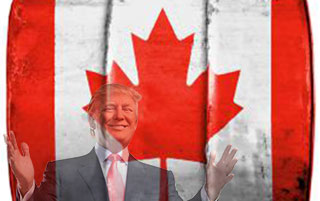As quickly as the OPEC supply cut advantages evaporated, so did the prospects for the Canadian economy. Yesterday, the Bank of Canada decided to keep its rates unchanged at 0.5%. The report also shows that Canadian companies have failed to increase exports. Record household debt is also weighing down on the general economic situation, and job figures show that 90% of new jobs created are part-time jobs.
Can Raw Materials Rescue Canada?
The Canadian economy is not as diversified as it should be. It depends on the US market for about ¾ of its exports, and raw materials are still its main export. Manufactures are constantly declining despite the favorable exchange rates. Canada’s only hope given Trump’s victory, is for the Keystone XL pipeline projects to go ahead as planned, in order to reduce the costs of getting Canadian oil to markets. It seems that once again, only raw materials will be able to save the Canadian economy.
South of the Border
Canada is not only counting on approval for the Keystone XL pipeline. Canadian businesses are also hoping that President Elect Trump’s policies will not hamper their sales south of the border. Trump represents a mixed bag for the Canadian economy. On one hand, his seemingly protectionist and anti-NAFTA stance could hurt Canadian exports further – the first industry to be hit will be the softwood industry – while on the other hand Trump’s presidency could represent a boost for sales given the infrastructure projects he is planning.
Oil Remains the Central Pillar in the Canadian Economy
Nevertheless, the single most important factor for Canada is the oil industry. It is clear that the OPEC deal did little to improve the situation for Canadian oil producers, but pipelines could help. Canadian reliance on its oil industry is evident, and it seems that no other product could fill in the void since oil prices dipped in 2015. A year and a half later, Canada is still reeling from the decline in oil prices, and unemployment nationwide is up.
Oil producing provinces – like Alberta and Saskatchewan – underpinned Canadian economic growth for 15 years. These provinces provided jobs for millions of Canadians around the country, and their fall dragged the whole economy down. Modest job increases elsewhere have not been able to pull Canada out of this economic downturn yet, and it seems that they will not be able to. The only hope Canada has is its raw materials, especially oil. Otherwise the Bank of Canada will have to keep interest rates low and household debt will continue growing.






